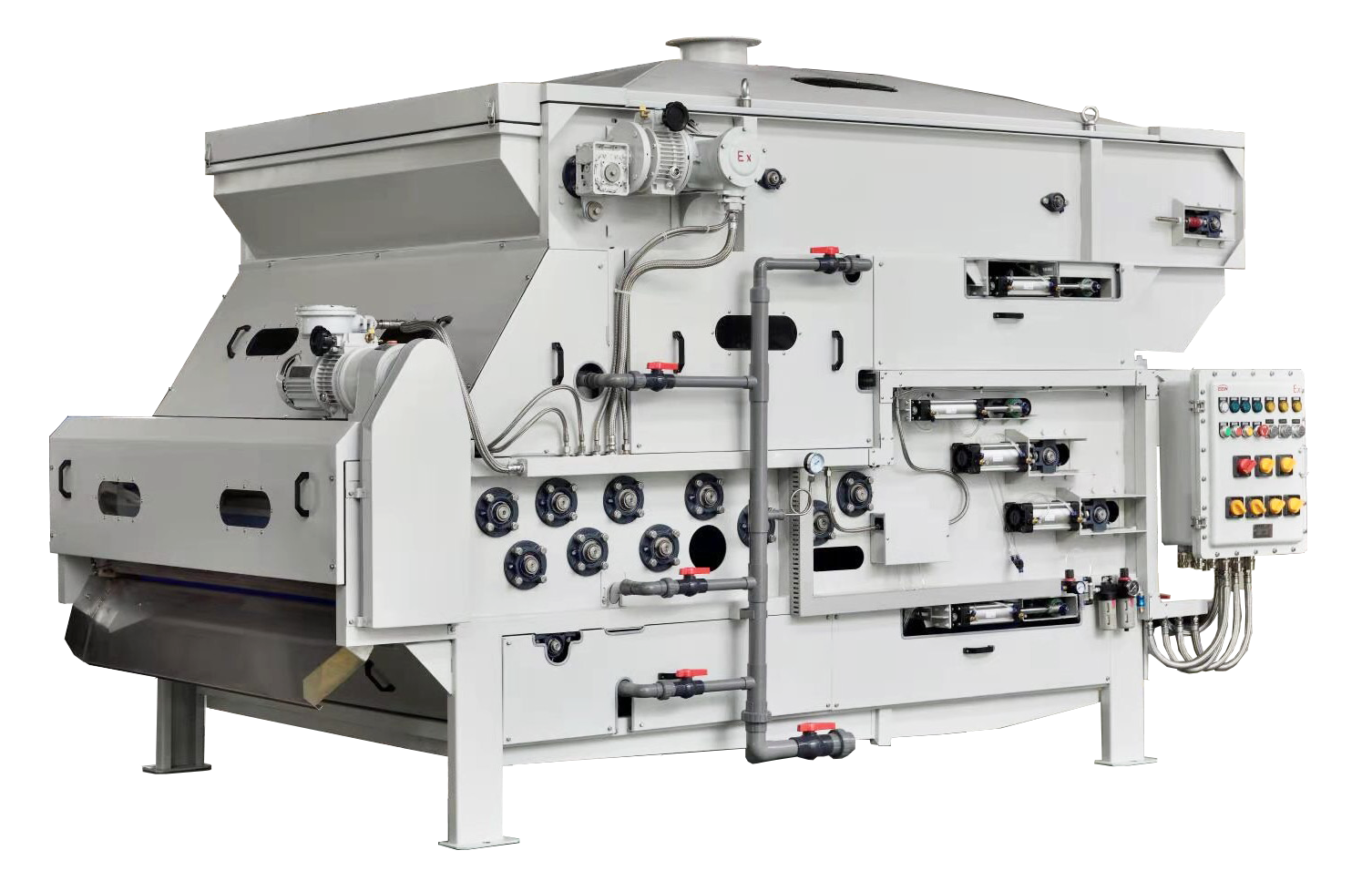close
Choose Your Site
Global
Social Media











Content Menu
● What is a Belt Filter Press?
● Applications of Belt Filter Press
>> Municipal Wastewater Treatment
● Advantages of Belt Filter Press
>> Versatility
● Future Trends in Belt Filter Press Technology
>> Automation and Control Systems
>> Integration with Other Technologies
>> What is the primary function of a belt filter press?
>> In which industries are belt filter presses commonly used?
>> What are the main advantages of using a belt filter press?
>> What challenges do belt filter presses face?
>> How is the technology of belt filter presses evolving?
The belt filter press is a crucial piece of equipment in the field of wastewater treatment and sludge dewatering. This machine plays a significant role in separating liquids from solids, making it an essential tool for various industries, including municipal wastewater treatment plants, food processing, and chemical manufacturing. In this article, we will explore the working principles, applications, advantages, and challenges associated with belt filter presses.
A belt filter press is a mechanical device that uses two porous belts to separate liquids from solids in a slurry. The process involves several stages, including gravity drainage, mechanical dewatering, and cake formation. The machine is designed to handle a wide range of materials, making it versatile for different applications.
The operation of a belt filter press can be divided into three main stages:
1. Gravity Drainage: The slurry is fed onto a moving belt, where gravity allows the liquid to drain through the belt's porous surface. This initial stage reduces the volume of liquid in the slurry.
2. Mechanical Dewatering: After gravity drainage, the partially dewatered slurry is passed between two belts that are under pressure. This pressure further squeezes out the liquid, resulting in a more solid cake.
3. Cake Formation: The final stage involves the formation of a solid cake that can be easily removed from the press. The cake is typically composed of a high percentage of solids, making it suitable for disposal or further processing.
Belt filter presses are widely used in various industries due to their efficiency and effectiveness in dewatering processes. Some common applications include:
In municipal wastewater treatment plants, belt filter presses are used to dewater sludge generated during the treatment process. This reduces the volume of sludge that needs to be disposed of, leading to lower transportation and disposal costs.
The food industry generates a significant amount of wastewater and by-products that require dewatering. Belt filter presses are employed to separate liquids from solids in processes such as fruit and vegetable processing, dairy production, and meat processing.
In chemical manufacturing, various processes produce slurries that need to be dewatered. Belt filter presses are utilized to recover valuable materials and reduce waste, contributing to more sustainable production practices.
Belt filter presses offer several advantages that make them a preferred choice for many applications:
Belt filter presses are known for their high efficiency in separating liquids from solids. They can achieve a high percentage of solids in the cake, which is beneficial for disposal or further processing.
Compared to other dewatering methods, belt filter presses have lower operating costs. They require less energy and maintenance, making them a cost-effective solution for many industries.
Belt filter presses can handle a wide range of materials, from municipal sludge to industrial by-products. This versatility makes them suitable for various applications across different sectors.
The compact design of belt filter presses allows them to fit into limited spaces, making them ideal for facilities with space constraints. Their design also facilitates easy integration into existing processes.
Despite their advantages, belt filter presses also face certain challenges and limitations:
While belt filter presses are generally low maintenance, they do require regular inspections and maintenance to ensure optimal performance. This includes checking the belts, rollers, and hydraulic systems.
The effectiveness of a belt filter press can be influenced by the characteristics of the sludge being processed. Variations in particle size, composition, and viscosity can affect the dewatering efficiency.
The initial investment for a belt filter press can be significant, which may deter some facilities from adopting this technology. However, the long-term savings in operating costs often justify the initial expenditure.
As industries continue to seek more efficient and sustainable solutions for wastewater treatment and sludge management, the technology behind belt filter presses is evolving. Some future trends include:
Advancements in automation and control systems are making belt filter presses more efficient. Automated monitoring and control can optimize the dewatering process, leading to better performance and reduced labor costs.
The development of new materials for belts and components can improve the durability and efficiency of belt filter presses. These enhancements can lead to longer service life and reduced maintenance needs.
Belt filter presses are increasingly being integrated with other technologies, such as membrane filtration and centrifugation, to enhance overall dewatering performance. This integration can provide a more comprehensive solution for sludge management.
The belt filter press is a vital tool in the field of wastewater treatment and sludge dewatering. Its efficiency, versatility, and cost-effectiveness make it a preferred choice for various industries. While there are challenges associated with its use, ongoing advancements in technology are likely to enhance its performance and applicability in the future.
The primary function of a belt filter press is to separate liquids from solids in a slurry, effectively dewatering sludge and other materials.
Belt filter presses are commonly used in municipal wastewater treatment, food processing, and chemical manufacturing industries.
The main advantages include high efficiency, low operating costs, versatility, and a compact design.
Challenges include maintenance requirements, the influence of sludge characteristics on performance, and the initial investment cost.
